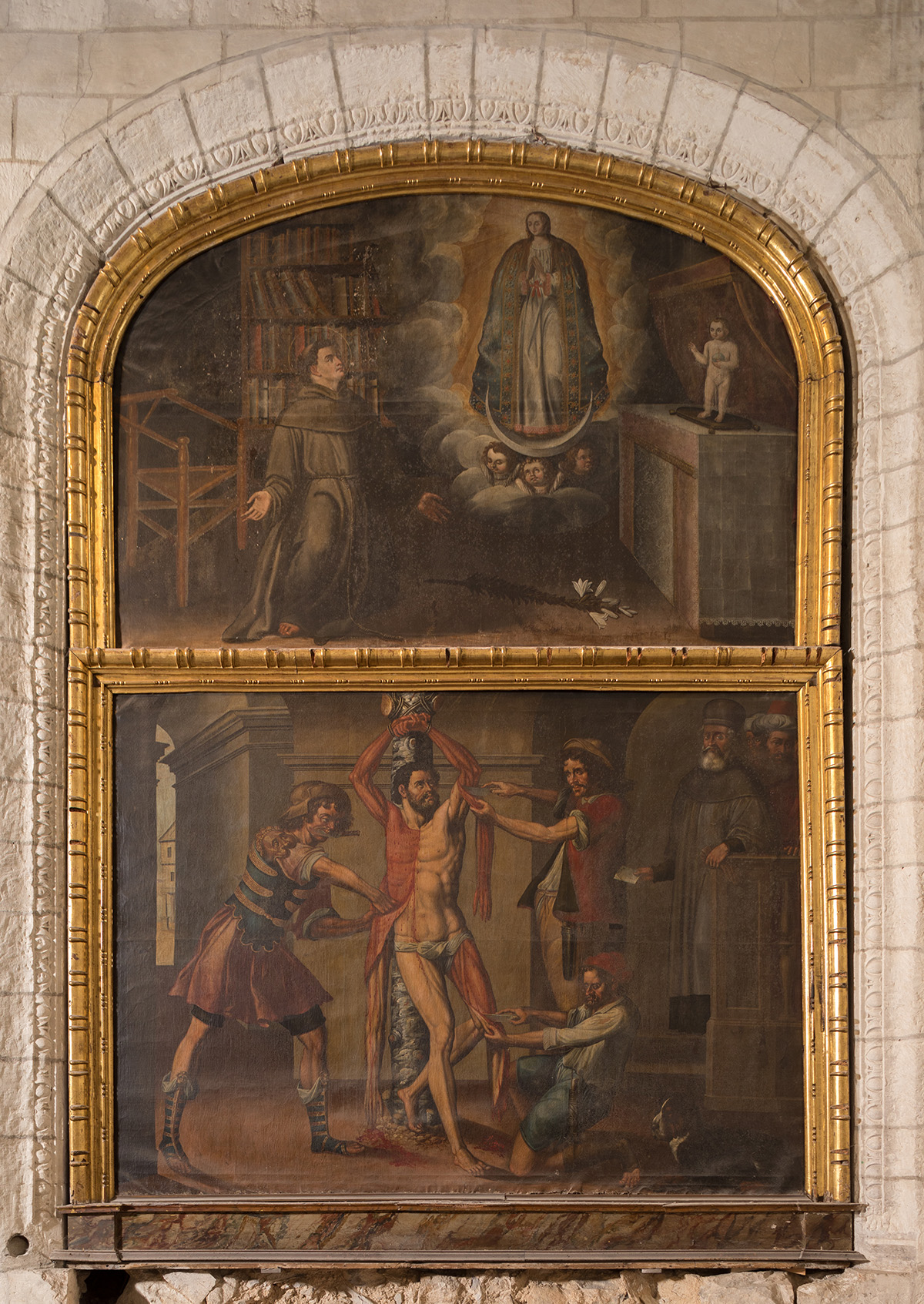Martyrdom of Saint Bartholomew and Apparition of the Immaculate Conception to the Franciscan Friar John Duns Scotus
Martyrdom of Saint Bartholomew and Apparition of the Immaculate Conception to the Franciscan Friar John Duns Scotus
The ensemble comprises two scenes framed in the form of an altarpiece. The lower part depicts the martyrdom of Saint Bartholomew and the upper part the apparition of the Immaculate Conception to the Franciscan Friar John Duns Scotus. It was part of the Chapel of Saint Bartholomew, which from the beginning was owned by the Maturana-Cucho family, whose coat of arms can still be seen at the entrance and on the central keystone of the vault. The work must have been executed around the middle of the 17th century. It is a sound painting that must be associated with the Valladolid school, with a ribbed frame that dates back to the same period as the painting.
Saint Bartholomew is depicted half-naked, tied to a column and flayed alive by three dark-skinned, fierce-looking individuals. Three figures can be seen entering the room through a doorway to the right in the background. They are probably King Astiages, whose death is attributed for having converted his brother Polymius to Christianity, and his court. The upper part of the painting depicts the apparition of the Immaculate Conception to John Duns Scotus. The event takes place in a darkened room that is illuminated by the arrival of the Virgin. At her feet is the Franciscan Friar on his knees in a welcoming position with a lily on the floor, symbolising his purity. Beside him is a chair and in the background a bookcase with a large number of books. In front of this religious figure is an altar table with Child dressed in a transparent garment.
Locution
Ficha técnica
BASIC BIBLIOGRAPHY
AZCÁRATE RISTORI, José M.ª de. “Catedral de Santa María (catedral Vieja)”. En: PORTILLA VITORIA, Micaela J. et al. Catálogo Monumental Diócesis de Vitoria: Ciudad de Vitoria. Vitoria-Gasteiz: Obra Cultural de la Caja de Ahorros Municipal, tomo III, 1968, p. 107.
TABAR ANITUA, Fernando. Barroco importado en Álava y Diócesis de Vitoria-Gasteiz: Escultura y Pintura [cat.]. Vitoria-Gasteiz: Diputación Foral de Álava, 1995. p. 95.



